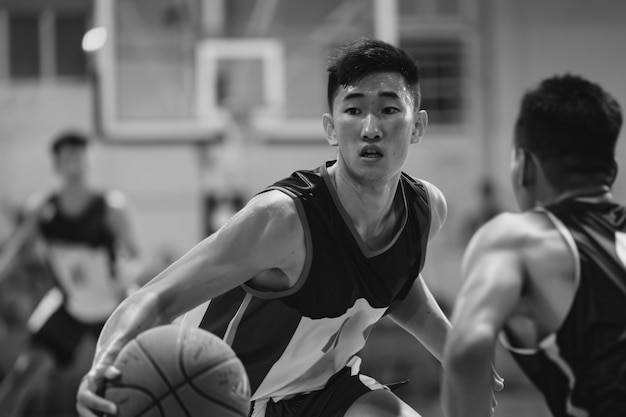Cultural Impact of Linsanity
Linsanity went beyond just numbers and showcased the Asian diaspora in a division that had little representation. With the help of social media, Lin's story became prominent, and the hashtag Linsanity had over 10 million hits on Twitter in February 2012. Lin's story motivated fans to place bet on NBA games with Asian players. This phenomenon triggered Asian American communities, especially in California and New York, to start youth basketball programs that focused on NBA Lin style. Lin's success showed other players from the Asian diaspora that they too can achieve high levels in sports and compete with other cultures.
There are a number of reasons to celebrate the phenomenon of Linsanity:
Media Coverage: In February 2012, classic ESPN and Asian media outlet Sina Sports content aired to over 50 million people.
Community Involvement: Basketball camp participation from Japanese Americans, and based on AAU stats, the basketball camp participation increased by 25%.
Commercial Success: In 2012, Lin's jersey sales placed him in the top 10 of most sold jerseys in the NBA.
These changes in culture influenced other parts of the world, too, including Asia. In Japan's B.League, youth participation increased because of Lin's success.
Diaspora Talent in the NBA
The Asian diaspora community has certainly made its mark in the NBA. For instance, Jordan Clarkson won the 2021 NBA Sixth Man of the Year award with the Utah Jazz, averaging 16.7 points per game, and he is a Filipino-American. Kyle Anderson is of Chinese descent and helped the Golden State Warriors win the championship in 2022 with his all-around game.
As of the 2024-25 season, the NBA has six players of Chinese heritage, five of Japanese heritage, and four of Lebanese heritage. This has been roughly 0.2% of the league since 2010, MelBet Indonesia site and similar platforms allow fans in Southeast Asia to take a more active role in the narratives of diaspora talent. Digital platforms such as Indonesia's MelBet have been positively correlated with the region's interest in the sport. For instance, Indonesia's basketball fanbase increased 15% in 2024 as diaspora players became more visible.
More talent has also found its way to the league:
At 5-foot-8, Japanese guard Yuki Kawamura signed a two-way contract with the Memphis Grizzlies in 2024 because of his elite passing skills.
Jaylen Hoard is of partial Lebanese descent and played for the Portland Trail Blazers, averaging 7.1 points in the 2022-23 season with limited playing time.
Keisei Tominaga, the Japanese sharpshooter known for his 38% three-point shooting, joined the Indiana Pacers' G-League affiliate in 2024.
Scouting systems in Asia and the U.S. recognize the increasing versatility of players in the diaspora. The MelBet Indonesia site, which reviews NBA and local talent, helps to recognize local players early.

Key Diaspora Players
Rui Hachimura is one of the most important diaspora players. He is a Japanese forward on the Los Angeles Lakers who averages 13.2 points and 5.1 rebounds in the 2024-2025 season. Jaxson Hayes has some Asian heritage and plays for the Dallas Mavericks. He has been averaging 12.3 minutes in the most recent playoffs. Their contribution are of different skill sets.
These are some of the players who show the diversity of the league:
Player | Heritage | PPG | APG | RPG | Years Active |
Jeremy Lin | Taiwanese-American | 11.6 | 4.5 | 2.8 | 20102019 |
Jordan Clarkson | Filipino-American | 14-3 | 2.7 | 3.2 | 2014present |
Rui Hachimura | Japanese | 12-1 | 1.2 | 5.0 | 2019present |
Kyle Anderson | Chinese-American | 7.5 | 2.8 | 3.3 | 2014present |
NBA Average | N/A | 10.2 | 2.4 | 4.3 | N/A |
NBA and Asian League Connections
The connection the NBA has with Asian leagues has grown with the launch of the East Asia Super League (EASL) in 2023. The 2024 EASL Final 4 consisted of Ryukyu Golden Kings from Japan, who defeated Meralco Bolts from the Philippines; this match garnered more than 5 million viewers. Ex-NBA players are in the Chinese Basketball Association (CBA), and Lin, who averaged 18.4 points for the Beijing Ducks in 2023-24, is one of those players. There is more integration to come with players like Hansen Yang, a 7-foot-1 center from the CBA, who attended the 2025 NBA Draft Combine. Matching the CBA with NBA talent is a good sign.
Regional Growth in Indonesia
The growth of basketball in Indonesia grew significantly after the 1998 reforms, with the opening of the Indonesian Basketball League (IBL). Hosting the 2023 FIBA World Cup in Jakarta brought 15,000 session attendees, which increased the viewership of IBL by 25%. IBL academies affiliated with the Philippines' PBA, which fosters East Asia Super League (EASL) prospects, are training perimeter shooting. Since 2020, community programs in Jakarta and Bali have constructed over 200 public courts, which has increased youth participation in the sport by 30%. Since 2023, the IBL has partnered with EASL, which enables talent exchange by allowing Indonesian players to try out in Manila.
Some of the most impactful programs working towards the growth of basketball in Indonesia are:
FIBA World Cup Legacy: The 2023 FIBA World Cup Legacy. Fifty new courts in Jakarta were a part of the infrastructure improvements.
PBA Academies: In 2024, over 500 Indonesian youngsters were trained in fast-break strategies in Manila-based programs.
Corporate Sponsorship: Local businesses sponsored 150 public courts in Bali, which helped grassroots participation.
Sustaining the Bridge
The NBA's Basketball Without Borders in Taipei 2025 trained 60 Asian prospects with a focus on analytics, which includes CBA alum Cui Yongxi, who made his Nets debut in 2024. With the diaspora's talent having been the most important vehicle for inter-regional alignment, the newly expanded quota on KBL, along with other emerging Asia leagues, will ensure competitive exchange in talent and gameplay.






